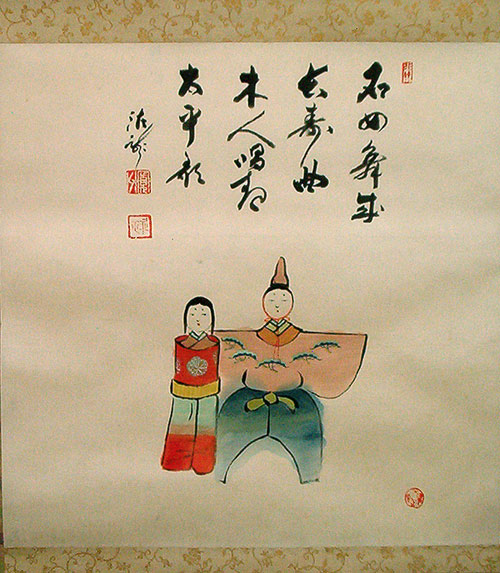
ZEN PAINTINGS |
PAINTINGS BY JAPANESE ZEN MASTERS ORIGINAL WORKS OF ART |

Deiryu (1895–1954)
"Hinasama Dolls"
Ink on satin
Size: 14 ½" x 14 ½" (19 ½" x 52 ¾" overall)
Mounting: Striped silk and blue silk
Click here to view complete mountingTranslation:
A stone woman dances to a tune of longevity;
A wooden man sings a song of peace.Painted and inscribed by Deiryu
In Japan such dolls, representing an imperial couple, are displayed on the third day of the third month, a festival popularly known as "Girl's Day." The pair symbolizes connubial bliss and harmony between the sexes. It was likely brushed for the family of one of Deiryu's supporters.
Deiryu has turned the painting into a Zenga by adding a well-known koan as an inscription. This koan was one of Hakuin's favorites, and that great teacher, too, sometimes enlivened his Zen art with color. Color in Zen art is rare but it can be very pleasing when utilized properly.
Takuhatsu, mendicant begging, is an important part of Zen training. As referred to in the inscriptions, it is a practice that helps both monstic and lay Buddhists. The monks learn humility, patience, and gratitude while the lay followers earn merit by giving. This flock of black birds" - a small army of monks - is lead by the abbot. It is not certain who did the painting, but this is a very early, and delightful, example of what was to become a favorite Zenga theme.
For price
information, please contact Belinda Sweet
and Danielle Williams at: zenart@peoplepc.com